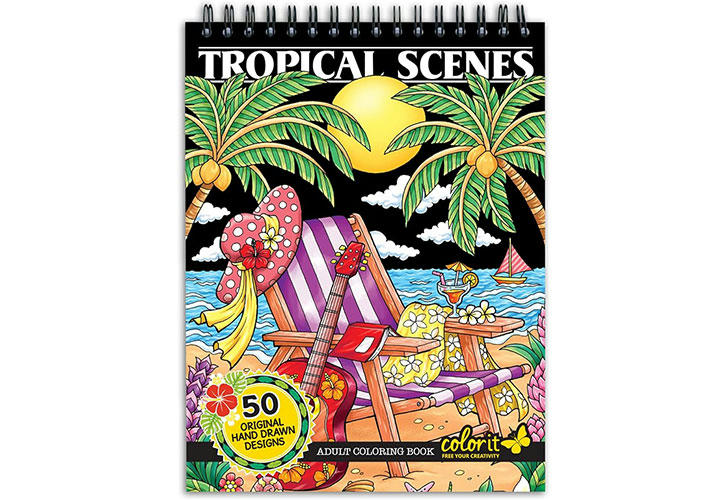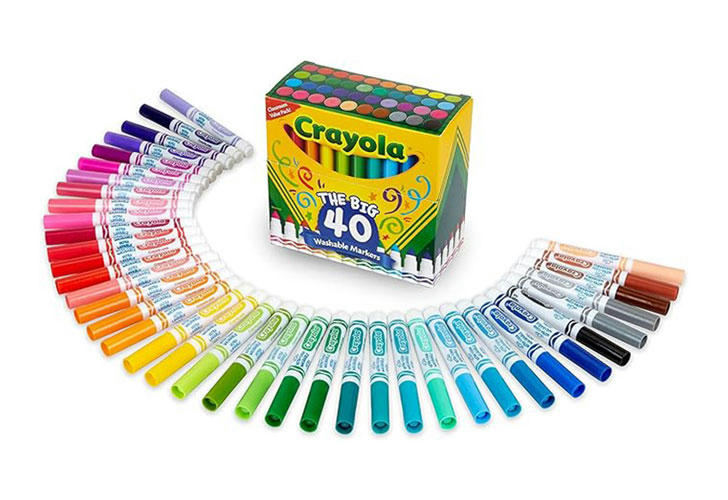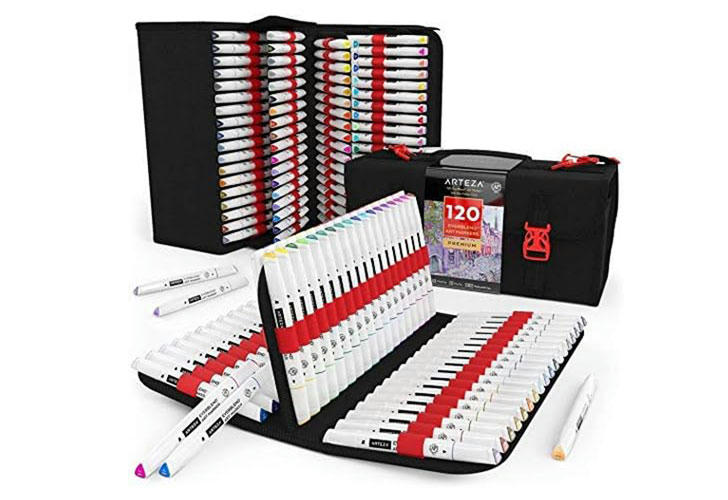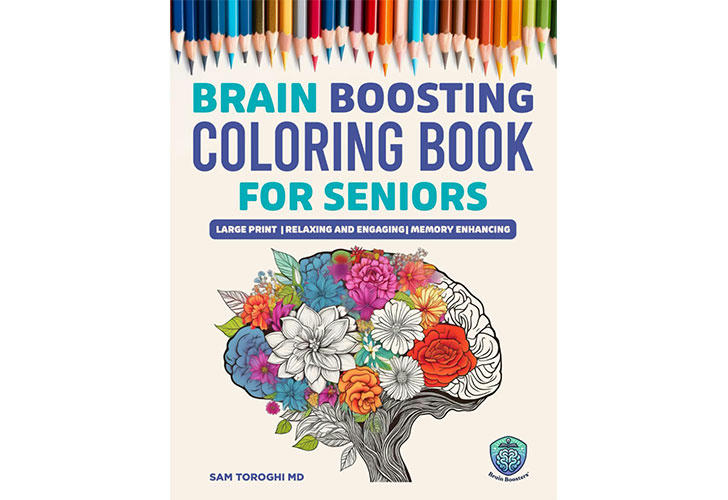How Coloring Activities Can Help Alleviate Symptoms of Alzheimer’s Disease?
coloring activities have emerged as a simple yet powerful tool to engage the mind, reduce stress, and foster emotional well-being in Alzheimer’s patients. However, research shows that creative activities like coloring can activate undamaged neural pathways, promoting cognitive resilience.
A 2020 study in The American Journal of Geriatric Psychiatry found that art therapy, including coloring, significantly reduced agitation and improved mood in dementia patients. Unlike complex tasks, coloring is accessible even for those with advanced cognitive decline, making it an ideal therapeutic activity.
Key Benefits of Coloring for Alzheimer’s Patients
1. Reduces Anxiety and Agitation
Alzheimer’s patients often experience frustration due to confusion or communication difficulties. Coloring provides a calming, structured activity that distracts from stressors. The rhythmic motion of coloring can lower cortisol levels (the stress hormone) and promote relaxation, similar to meditation.
2. Stimulates Cognitive Function
Choosing colors, staying within lines, and recognizing patterns gently challenge the brain. This low-pressure mental exercise helps maintain skills like decision-making, attention span, and visual recognition.
3. Encourages Self-Expression
Even as verbal communication declines, coloring allows individuals to express emotions non-verbally. A vibrant sunset or a carefully shaded flower can convey joy, nostalgia, or calm.
4. Improves Motor Skills
Gripping crayons, markers, or colored pencils strengthens hand muscles and enhances coordination. For those with tremors or stiffness, adaptive tools like thick-grip pencils can make the activity easier.
5. Fosters Social Connection
Coloring alongside caregivers or family members creates opportunities for bonding. Discussing colors or reminiscing about the images (e.g., “This garden reminds me of Grandma’s roses”) can spark meaningful interactions.
How to Choose the Right Coloring Tools and Books
Selecting age-appropriate and dementia-friendly materials is crucial for success:
Opt for Simple Designs: Look for large, clear outlines with minimal intricate details. Nature scenes, animals, and abstract patterns work well.
Prioritize Familiar Themes: Images tied to the person’s interests or past experiences (e.g., vintage cars, gardens, holidays) can evoke positive memories.
Use Adaptive Tools: Thick-colored pencils, ergonomic crayons, or non-toxic markers with easy-grip barrels accommodate reduced dexterity.
Choose High-Quality Paper: Thick, tear-resistant paper prevents frustration from bleeding or ripping.
Consider Reminiscence Therapy Books: Some coloring books are designed specifically for dementia patients, featuring nostalgic images from the 1950s–1970s.
Top-Rated Coloring Products on Amazon (With Rising Popularity)
Here are five highly rated, therapeutic coloring tools and books trending on Amazon:
1. ColorIt Adult Coloring Books – “Tranquil Designs” Series
Why It’s Great: Features stress-relieving patterns like mandalas and floral designs. Pages are single-sided and perforated for easy removal.
Key Feature: Thick paper prevents bleed-through.
2. Crayola Ultra-Clean Washable Markers (Broad Line)
Why It’s Great: Vibrant, non-toxic markers with easy-grip barrels. Washable ink minimizes mess.
Key Feature: Ideal for those with arthritis or weak grip strength.
3. Aspiring Editions “Nostalgic Moments” Senior Coloring Book
Why It’s Great: Designed for seniors, with large-print images of retro scenes (e.g., diners, classic cars, family picnics).
Key Feature: Includes memory prompts to encourage conversation.
4. Arteza EverBlend Art Markers (Skinny & Broad Tips)
Why It’s Great: Dual-tip markers allow for both broad strokes and fine details. Alcohol-based ink blends smoothly for a satisfying creative experience.
Key Feature: Ergonomically designed for comfort.
5. Brain Boosting Coloring Book for Seniors with Dementia
Why It’s Great: A wonderful tool for caregivers seeking engaging, easy-to-use activities for loved ones. Suitable for all stages of cognitive ability, providing gentle mental exercise.
Key Feature: Large print and simple designs make it easy on the eyes and perfect for seniors.
Practical Tips for Caregivers
Create a Calm Environment: Choose a quiet, well-lit space free from distractions. Soft background music can enhance relaxation.
Start Small: Begin with 10–15 minute sessions to avoid overwhelming the individual. Gradually extend time as their focus improves.
Offer Gentle Guidance: Suggest color choices or praise efforts without taking over. For example, “I love how you blended those blues!”
Use Coloring as a Communication Tool: Ask open-ended questions about their artwork, like “What does this color remind you of?”
Adapt for Late-Stage Alzheimer’s: Simplify further by using stencils or pre-colored examples as guides.
Addressing Common Concerns
“What if they lose interest?” Rotate coloring books with different themes to maintain engagement. Pair the activity with their favorite snacks or music.
“What if they can’t stay within the lines?” Reassure them that there’s no “right” way to color. The goal is enjoyment, not perfection.
“Are markers safe?” Choose non-toxic, washable markers to ensure safety, especially for those who may put items in their mouths.
Conclusion: Coloring as a Bridge to Joy and Connection
Alzheimer’s disease may steal memories, but it doesn’t have to erase joy. Coloring activities offer a bridge to creativity, calm, and connection—even in the face of cognitive decline. For caregivers, these simple sessions provide precious moments of shared purpose and understanding.
By incorporating coloring into daily routines and selecting the right tools, families can empower their loved ones to express themselves, engage their minds, and find moments of peace. Explore the recommended Amazon products today, and discover how a box of colored pencils and a thoughtfully designed book can become powerful allies in the journey with Alzheimer’s.





